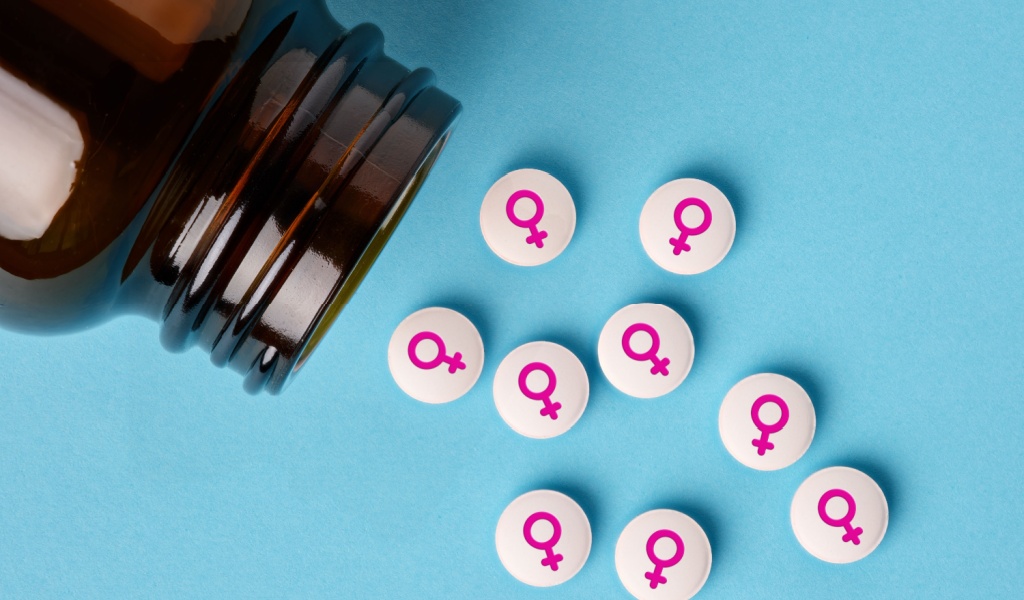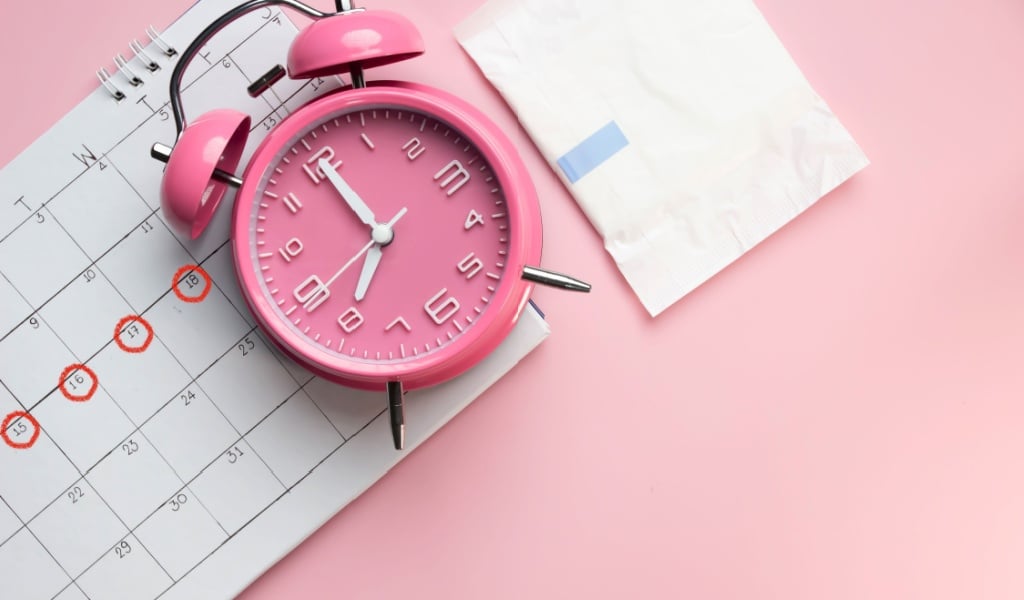Ever wonder why you’re suddenly dealing with pimples or wrinkles? For women, hormones are essential for the skin’s appearance and texture. These hormonal changes can differ during different phases of life, affecting the skin in many ways. From having pimples and oily skin during puberty to dryness and wrinkles in menopause, hormones continuously affect our skin. Understanding how hormonal fluctuations influence the skin at various phases of life can help women direct their skincare journey with assurance.

Adolescence
Adolescence is the first phase when girls notice changes in their skin, all thanks to hormones. During adolescence, the body experiences a rise in hormones, mainly androgens (male hormones found in both males and females). These hormones activate the sebaceous glands to create more oil, which can result in blocked pores and acne.
Acne is the most prevalent skin condition during adolescence, affecting almost 85% of teenagers. Heightened oil production frequently results in breakouts, particularly on the face, chest, and back. The positive is that teenage skin usually is very resilient. Teenagers can easily manage their acne with less trouble with a proper skincare routine that includes mild cleansers, non-comedogenic products, and oil-free moisturizers.
Young Adulthood
As girls become young adults and enter their twenties and early thirties, hormonal changes continue to influence the skin, but issues related to acne typically subside. Other hormonal fluctuations, like those linked to the menstrual cycle, can cause skin problems, mainly around the jawline, chin, and neck. This is known as “hormonal acne,” a common condition before and during periods.
The rise in progesterone and the fall in estrogen levels just before a woman’s cycle can cause the sebaceous glands to produce excessive oil, resulting in blocked pores and breakouts. Stress also affects hormonal variations by increasing cortisol levels, resulting in inflammation that worsens acne.
Many women in this stage use oral contraceptives to control hormone levels and acne. Some find that birth control helps to get rid of acne, while others might undergo adverse side effects, including worsened breakouts. It’s better to consult a healthcare provider to determine the best action.
Pregnancy
Hormones also have a major effect on the skin during pregnancy. A spike in hormones such as estrogen and progesterone can induce a range of skin changes, frequently leading to that desired “pregnancy glow” owing to higher blood flow and oil production.
Pregnancy results in brighter skin for many women because estrogen promotes collagen production. However, some women might face pregnancy acne, particularly if the oil production is extreme. Estrogen and progesterone also influence the growth of melasma, a condition where brown or grayish spots emerge on the face, which is known as the “mask of pregnancy.”
Apart from acne and pigmentation, pregnancy can also result in stretch marks because the body expands to make room for a growing baby. Although there’s no foolproof method to avoid stretch marks, moisturizing and drinking enough water can help increase skin elasticity.
Perimenopause and Menopause
As females approach their late 30s and early 40s, they start to go through perimenopause, the temporary phase that leads to menopause. At this time, estrogen levels begin to fluctuate more significantly, bringing changes to the skin. These hormonal shifts can result in various skin problems, such as increased dryness, thinner skin, and diminished elasticity.
One of the outcomes of hormonal fluctuations during this phase is a decline in collagen production. As estrogen, crucial for preserving the skin’s firmness and thickness, reduces, the skin becomes less supple and thinner, which results in wrinkles and sagging. Moreover, collagen production slows down, making the skin more vulnerable to wrinkles and dryness.
Some women also suffer from adult acne during perimenopause, which can be aggravating as they believe they’ve outgrown their teenage breakouts. However, hormonal changes during this period can cause acne outbreaks, particularly in the chin and jawline.
For many women, menopause (the official conclusion of menstruation, signified by 12 consecutive months without getting periods) brings about facial dryness. Without the hormone estrogen, which assists in preserving moisture levels in the skin, many women discover their skin getting drier, more delicate, and vulnerable to irritation. The skin might also look duller due to a decline in natural oil production.

Post-Menopause
After menopause, when a woman has not had her period for 12 months in a row, hormone levels lower drastically, especially estrogen. These changes can result in even more visible skin aging effects, such as thinning, dryness, and lack of elasticity. With the drop of estrogen, collagen production slows down, resulting in noticeable wrinkles and drooping skin.
At this phase, the skin becomes more delicate and vulnerable to harm. Many women also experience a rise in sun spots, inconsistent pigmentation, and dullness. As the skin’s natural oil production drops, it’s necessary to implement a skincare routine that prioritizes moisturizing and gentle care.
Although post-menopausal skin is more vulnerable to damage, it’s possible to maintain good skin with the right products. For instance, hyaluronic acid serums can offer essential moisture, while retinoids might aid in promoting collagen production. Sunscreen is also necessary to prevent additional sun damage as the skin becomes more susceptible to UV rays.
Tips for Managing Hormonal Skin Changes at Every Stage
Even though hormonal skin changes are unavoidable, many ways to handle them successfully at every phase of life exist. They are as follows,
- Hydrate the Skin: As you age, preserving your skin’s hydration becomes even more vital. Drink lots of water and use moisturizers that help seal in moisture to keep the skin looking smooth and fresh.
- Have a Balanced Diet: A diet high in nutrients can nourish your skin from the inside. Antioxidant-rich foods, omega-3 fatty acids, and vitamins like C and E can support skin well-being and prevent free radical damage.
- Stress Management: Stress can aggravate hormonal imbalances, resulting in acne, dull skin, and other problems. Exercising daily, meditating, or yoga can help lessen cortisol levels and enhance the look of the skin.
- Maintain a Skincare Routine: No matter your skin type or age, a regular skincare routine is essential. Washing, moisturizing, and applying sunscreen regularly can protect and nourish your skin. Use products that suit your skin’s requirements at each phase, such as acne treatments during puberty, moisturizing creams during menopause, and mild exfoliants to fight the effects of aging.
- Seek Advice from a Dermatologist: If skin problems are constant or worse, it’s better to refer to a dermatologist. Whether it’s about pimples during perimenopause or dryness after menopause, a dermatologist may prescribe oral drugs, topical creams, or even hormone replacement therapy to control skin changes.
Conclusion
Hormones greatly influence a woman’s skin at every stage of life. From getting acne in adolescence to the dryness and wrinkles of menopause, knowing about these hormonal fluctuations can assist you in maintaining your skin with the correct skincare routine and medication. You can preserve healthy, radiant skin through every hormonal change with a little concern and dedication. Accept these changes, and remember that you’re not alone because your skin is only adjusting to the exclusive journey called “womanhood”.



